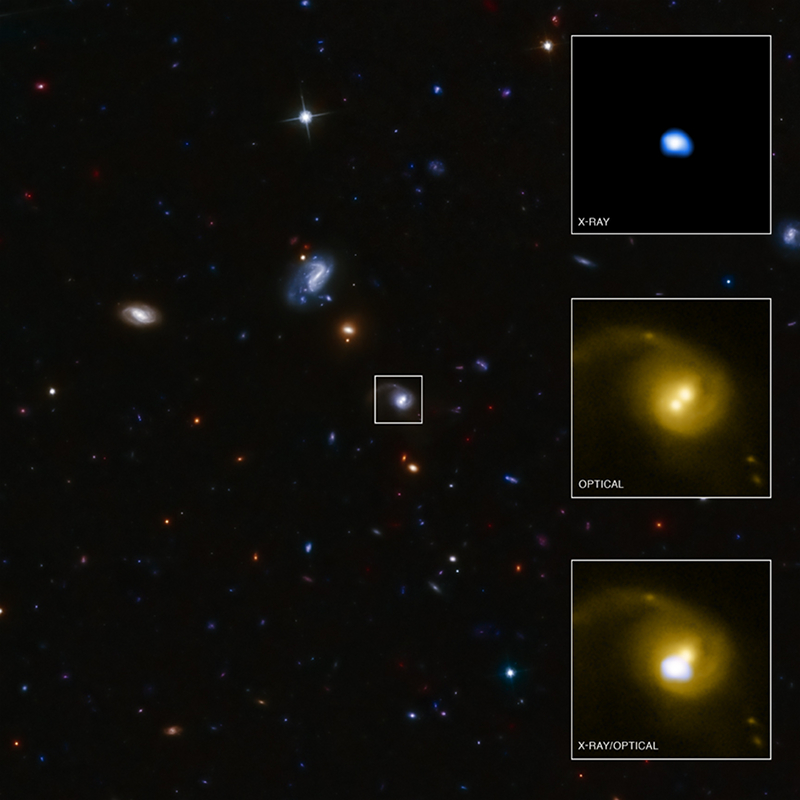
 Credit: X-ray: NASA/CXC/SAO/F.Civano et al; Optical: NASA/STScI; Optical (wide field): CFHT, NASA/STScI
Credit: X-ray: NASA/CXC/SAO/F.Civano et al; Optical: NASA/STScI; Optical (wide field): CFHT, NASA/STScI
Lost
Black holes can be awfully difficult to detect. In the (rare?) instances when they are actively feeding, they produce tell-tale X-ray emission. If they are co-aligned with a background object, they produce strong gravitational lensing. But if they are wandering through the intergalactic void, they can be near impossible to find. The black holes we usually detect are those safely ensconced in host galaxies, either paired with a sister star from which the black hole feeds, or housed in the galactic nucleus, source of enormous outpourings of radiation and matter. How many are wandering the deep space between galaxies, we can only guess. How could they get out there? One way would be to be ejected from a host galaxy, slingshotted by the energy generated though the intense gravitational radiation produced by the merger of two black holes falling into one. How often this happens is anybody's guess. But we think we have at least one example - a system known as CID 42. When we last left CID 42, we found a peculiar system. CID 42, itself the result of a cosmic collision between two galaxies, has two bright point sources of radiation near its center, along with an associated X-ray source. The presence of these two peculiar sources suggested strange goings on - either a source which came too close to a central supermassive black hole and was propelled from the galaxy before it could be swallowed by the central black hole, or something else even weirder. New, sharper pictures of CID 42 with the High Resolution Camera on the Chandra X-ray Observatory have provided the evidence to untangle the tale. The image above is a composite image of CID 42 in optical light and in X-rays. The HRC data suggest that, during the galaxy-galaxy collision, two central supermassive black holes merged, and the resulting emission of gravitational radiation produced enough energy to drive the newly-merged black hole out of the galaxy, at a speed in excess of a million miles per hour. Even at this enormous speed, it will take hundreds of millions of years for this object to enter intergalactic space. But since the galaxy is four billion light years from earth, this probably means that the merged black hole is already wandering the dark space between the galaxies. How many others are there out there?
Published: June 11, 2012
<
HEA Dictionary ● Archive
● Search HEAPOW
● Other Languages
● HEAPOW on Facebook
● Download all Images
● Education ● HEAD
>

Each week the HEASARC
brings you new, exciting and beautiful images from X-ray and Gamma ray
astronomy. Check back each week and be sure to check out the HEAPOW archive!
Page Author: Dr. Michael F. Corcoran
Last modified Monday, 26-Feb-2024 17:20:48 EST


